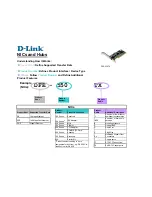
16/24-Port PoE Switch
©r------------------'
Please refer to Figure 6-7.
tnogP,,.,\IU.N
Figure 6-7
6.3 Link Aggregation
Link aggregation is to form several physical ports of switch into one logical port, several
links which belong to the same aggregation group can be considered as a logical link
with bigger bandwidth.
Link aggregation can realize sharing responsibility of communication flow among each
member port in the aggregation group, which is to increase bandwidth. Meanwhile,
mutual dynamic backup can be realized among each member port in the same
aggregation group, which is to improve the link reliability.
There has to be certain config for member ports which belong to the same aggregation
group. These configurations include STP, QoS, VLAN, port properties, MAC address
study, mirroring, 802.1 x and Mac filtering etc.
Note:
It is not recommended to implement config of port and advanced functions for the ports
which are used for link aggregation.
Link aggregation can be divided into static aggregation and LACP, generally the
opposite end devices of switch link aggregation are switch and network cards.
6.3.1 Static Aggregation Mode
Static aggregation mode allows it to manually add several member ports in the aggregation
group, all the ports are in the forward status and share the overloaded flow. It needs to
create aggregation group and add member ports via manual config without the participation
of LACP (link Aggregation Control Protocol) protocol packet.
• Load Balancing Mode
There are three types of load balancing algorithm for port, which is shown in the following
table.
Load Balancing Mode Note
Source MAC
Load balance calculation based on the source MAC address of packet
Destination MAC
Load balance calculation based on the destination MAC address of packet.
MACSrc&Dst
Load balance calculation based on source & destination MAC address of
packet.
Table 6-2
• Aggregation Group
It is an assembly of a group of Ethernet ports. The supported number of aggregation groups
is three by default, which can't be modified. The default status of all the aggregation groups
is disable, member port is null by default.
• Member Port
The switch created all the aggregation groups by default, the port members are null. It needs
to enable aggregation group first if you want to configure member ports for aggregation
group, and then click the aggregation group where the port is located to enable aggregation
function.
Please refer to Figure 6-8 for the interface of static aggregation config, which includes load
balance mode, aggregation group and port members.
Figure 6-8
6.3.2 LACP Mode
LACP (Link Aggregation Control Protocol) is used to realize link dynamic convergence and
convergence separation which is based on IEEE 802.3ad standard. The both parties of
convergence devices converge the matched links together and receive & send data via
LACPDU packet interacting convergence information. The protocol can automatically add
and delete ports in the convergence group, it is equipped with high flexibility and provides
the capability of load balance.
After enabling the LACP function of the port, the port will inform the opposite end of the
system priority, system MAC, port priority port number and operation Key (it is decided by
physical properties, upper layer protocol info and management Key of the port).
The end with high priority of the device will dominate convergence and convergence
separation, the device priority is decided by system priority and system MAC, the device
with smaller system priority value has higher priority, the device with smaller system MAC
has higher priority when the system priority value is the same. The end with higher device
priority will select convergence port according to port priority, port number and operation
Key, the ports with same operation Key can be selected into the same convergence group,
the port with smaller port priority value will be selected by priority in the same convergence
group, the port with smaller number will be selected when the port priority is the same. The
selected ports will converge together to receive and send data after both parties interact
convergence information.












































